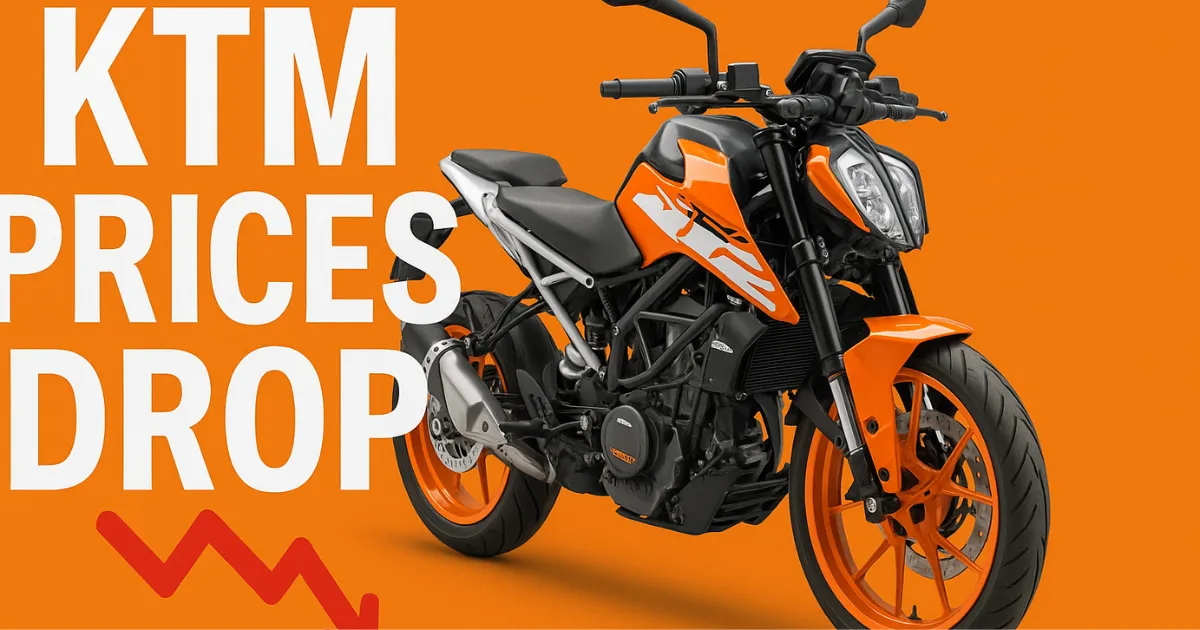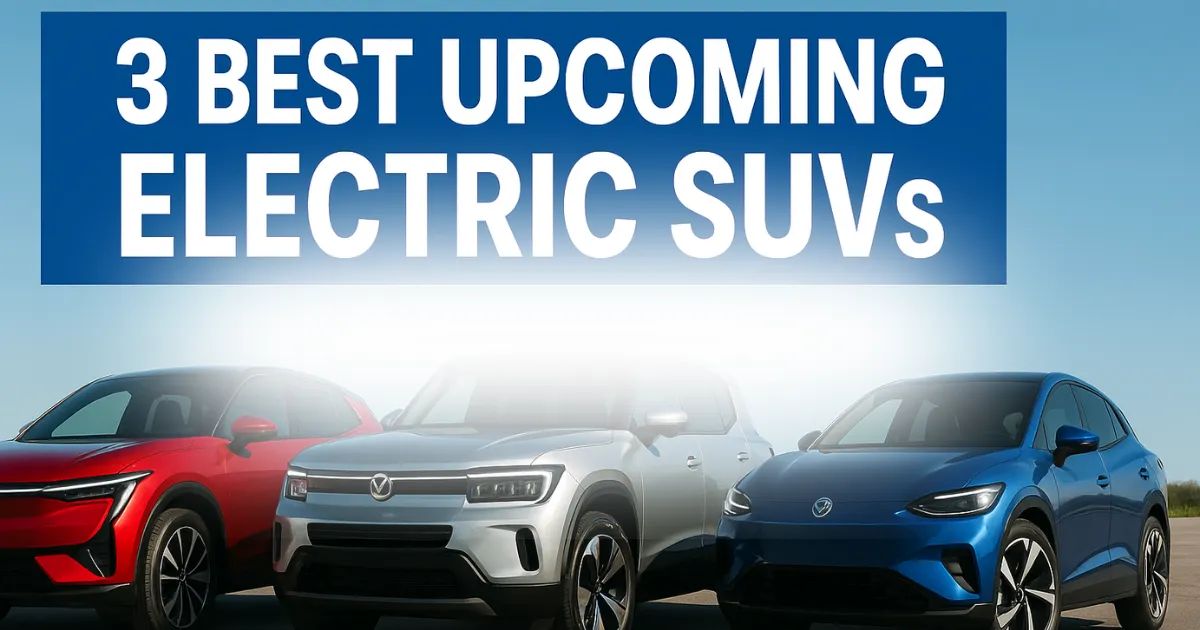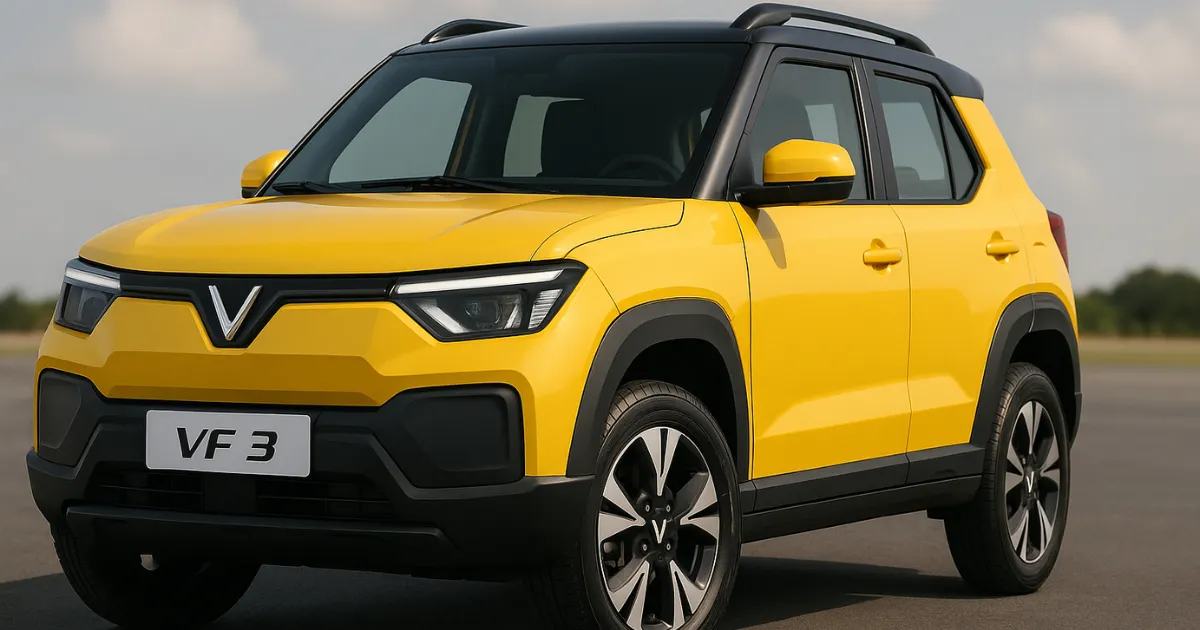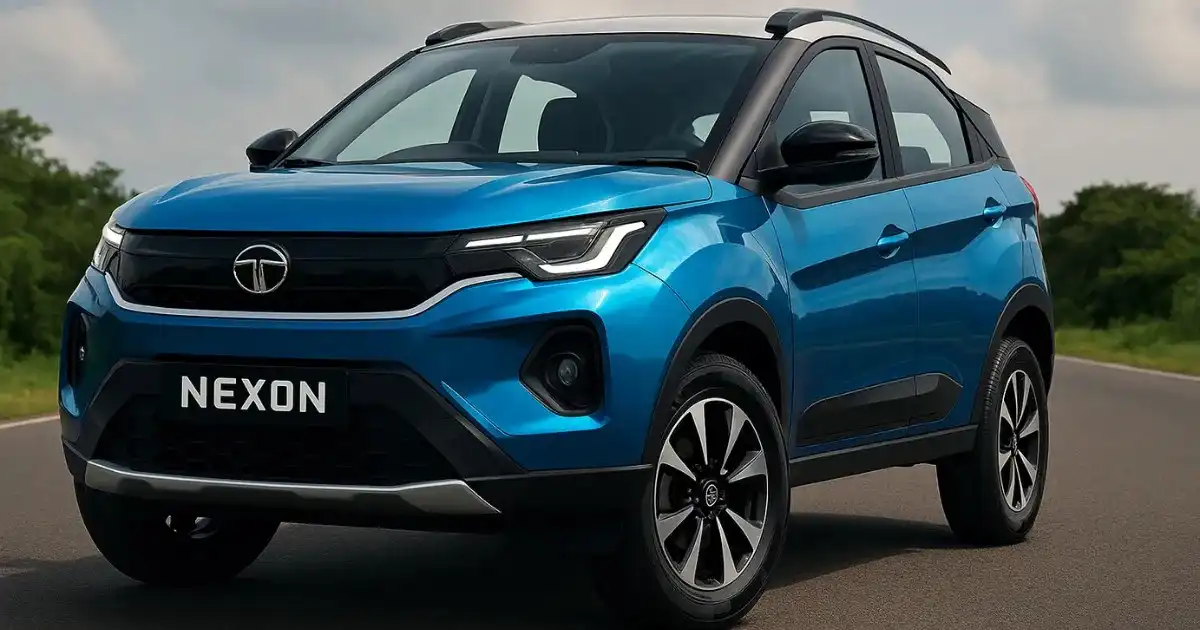Volvo EX30 Launch 2025: The automotive landscape is undergoing a monumental shift, and the premium compact SUV segment is fiercely contested. Yet, amidst a sea of new electric vehicles (EVs), one model is poised to fundamentally disrupt expectations for performance, safety, and sustainable luxury: the Volvo EX30 Launch 2025.
For too long, car buyers have been forced to choose between affordability, cutting-edge technology, and genuine environmental responsibility. The assumption was that a truly luxurious, incredibly quick, and supremely safe EV had to come with an eye-watering price tag and a large footprint. Volvo, the Swedish pioneer synonymous with safety, is challenging this pain point head-on.
The Volvo EX30 Launch 2025 is not merely another small EV; it is a meticulously engineered statement. Designed to have the lowest carbon footprint of any Volvo car to date, this compact powerhouse delivers adrenaline-pumping speed and revolutionary safety features in a package that is genuinely accessible.
This definitive, in-depth guide will take you far beyond the standard press release. We will unpack the Top 10 Amazing Features of the Volvo EX30 That Will Shock You, revealing the clever engineering, sustainable materials, and truly futuristic technology that make this vehicle a game-changer. Prepare to have your perceptions of a premium small SUV completely redefined.
The Electric Revolution Arrives: Why the Volvo EX30 Launch 2025 is a Global Event
The anticipation surrounding the Volvo EX30 Launch 2025 stems from its positioning as the brand’s smallest and most affordable fully electric SUV. This vehicle is Volvo’s crucial entry point into the rapidly growing premium compact EV market, aiming to attract a younger, urban, and sustainability-focused demographic. Its successful deployment across global markets, including its crucial assembly in key regions, is a linchpin of Volvo’s strategy to be an all-electric company by 2030. This is more than a new model; it’s a strategic pillar for the future of the brand.
Top 10 Amazing Features of the Volvo EX30 That Will Shock You
The features listed below are not incremental improvements; they represent foundational changes in vehicle design, safety philosophy, and in-car user experience. These innovations distinguish the EX30 from every competitor in its class.
1. The Mind-Blowing Performance: 0–60 MPH in 3.4 Seconds
The most immediate shock factor of the Volvo EX30 is its blistering speed. The Twin Motor Performance variant—equipped with a powerful 69 kWh battery and a dual-motor, all-wheel-drive (AWD) setup—delivers a staggering 422 horsepower and 400 lb-ft of torque. This incredible power allows the small SUV to sprint from 0 to 60 mph in a mere 3.4 seconds.
To put this in perspective, this acceleration time rivals high-performance sports cars and super-sedans, not typically compact family SUVs. This feature completely shatters the myth that “affordable” and “small” EVs must compromise on exhilarating, seat-pinning performance. The instantaneous torque delivery characteristic of electric drivetrains makes the Volvo EX30 feel impossibly quick, giving the driver unparalleled confidence for merging onto highways or executing rapid overtakes.
2. Revolutionary Safety Tech: The Driver Alert System with Infrared Sensor
Volvo’s commitment to safety is legendary, but the Volvo EX30 takes it to a new, proactive level. The Driver Alert System utilizes a sophisticated infrared sensor placed on the steering column. This sensor meticulously tracks the driver’s eye and head movements, monitoring blinking speed, duration, and head position.
If the system detects signs of distraction, drowsiness, or unresponsiveness, it issues immediate warnings, escalating from visual and audio cues to physical alerts. Furthermore, this system works in conjunction with the updated Pilot Assist feature, which is designed to bring the car to a controlled and complete stop if the driver remains unresponsive to the final prompts—a crucial, potentially life-saving function that establishes a new benchmark for semi-autonomous driving safety.
3. A Groundbreaking Interior: The Full-Width Harman Kardon Soundbar
Perhaps the most visually stunning and acoustically clever feature is the Soundbar that runs the entire width of the dashboard, spanning from pillar to pillar. In a radical move to simplify design and maximize storage, Volvo eliminated traditional speakers from the front doors altogether.
This single, centralized soundbar houses multiple speaker components, delivering rich, high-fidelity audio (often a 1040W system powered by Harman Kardon) that mimics the acoustics of a home audio system. This ingenious design choice not only creates more space in the doors for storage but also contributes to the car’s minimalist, uncluttered aesthetic, centralizing complex audio components into one visually striking element.
4. Extreme Sustainability: Recycled Denim and PVC Window Frame Decor
The EX30 is engineered to have the smallest CO2 footprint of any Volvo car to date, a fact achieved through an unprecedented focus on recycled and renewable materials. This commitment goes far beyond typical eco-friendliness.
The interior offers unique, nature-inspired “rooms” with materials like:
- Recycled Denim: Short fibers from shredded jeans—a material typically discarded in the denim recycling process—are woven into decor panels, giving the cabin a unique, textural finish.
- Particle Decor: Dashboard and door panel accents are made from plastic waste, specifically ground-up plastic from discarded PVC window frames and roller shutters, giving each piece a distinct, speckled, high-end appearance.
- Nordico: An upholstery material made from recycled PET bottles and bio-attributed pine resin from sustainably managed forests.
This approach ensures that over 17% of the total plastic and 25% of the aluminum used in the Volvo EX30 are recycled, making a powerful statement on circular economy principles in the automotive industry.
5. The Door Opening Alert (Dooring Protection)
In an urban environment, “dooring”—the act of opening a car door into the path of an approaching cyclist or scooter—is a serious safety hazard. The EX30 addresses this with a dedicated, highly advanced Door Opening Alert system.
Using the car’s rear radars (part of the Blind Spot Information System, or BLIS), the Volvo EX30 monitors the approach of bikes, scooters, or pedestrians from behind. If a front-seat occupant begins to open their door when a collision risk is imminent, the system triggers a flashing BLIS light, a visual warning on the center screen, and an escalating audio alert, helping to protect vulnerable road users—a testament to Volvo’s dedication to safety for everyone.
6. Centralized 12.3-inch Display and No Driver Gauge Cluster
Following a strong minimalist and tech-forward design philosophy, the Volvo EX30 completely removes the traditional instrument cluster behind the steering wheel. All driving information—speed, range, navigation, and critical vehicle data—is consolidated into a single, vertical 12.3-inch center touchscreen.
This centralization forces drivers to rely on the center screen or the optional heads-up display. The system features two driver views: a “Calm” view that displays only essential speed and battery information, and a “Surround” view that adds ADAS and real-time vehicle monitoring. While initially shocking to traditionalists, this uncluttered design choice amplifies the cabin’s minimalist aesthetic and enhances the overall sense of spaciousness.
7. Park Pilot Assist for Effortless Automated Parking
Maneuvering a compact SUV is already easy, but the Park Pilot Assist feature makes parking effortless in even the tightest spots. Unlike simpler parking aids, this system handles the steering, acceleration, and braking autonomously.
The car uses its sensors and 360-degree cameras to locate suitable parking spots, offering options to the driver on the center display. Once a spot is selected (be it parallel, perpendicular, or diagonal), the driver simply confirms, and the car does the rest. This feature transforms the often-stressful task of city parking into a seamless, hands-off experience, adding significant convenience to urban driving.
8. Digital Key Plus Functionality (Smartphone as Key)
The Volvo EX30 embraces true digital convenience with its Digital Key Plus feature. This technology allows the owner to use their compatible smartphone as the sole key to the vehicle. Utilizing Ultra-Wideband (UWB) technology, the car can accurately sense the phone’s location and proximity.
This means the car will automatically unlock as the owner approaches and lock as they walk away, without the need to physically take the phone out of a pocket or bag. The driver simply sits down and presses the brake pedal to start the car—a seamless, high-tech experience that significantly enhances daily convenience.
9. Integrated Google Built-in and Smart Shortcuts
The infotainment system runs on an advanced operating system with Google Built-in services, offering deep integration with Google Maps, Google Assistant, and the Google Play Store for in-car apps. More impressively, the system employs Smart Shortcuts—adaptive, context-aware controls located at the bottom of the central display.
These aren’t fixed buttons; they only appear when the feature is available or relevant. For example, the shortcut to open the tailgate will only appear when the vehicle speed is low enough for the function to be safely activated. This intelligent, constantly learning interface simplifies the driver’s focus, providing access to controls exactly when they are needed.
10. Nature-Inspired Ambient Light and Sound Themes
Continuing the Scandinavian theme, the Volvo EX30’s interior ambience is deeply inspired by nature, moving beyond simple color customization. The car features five distinct, nature-themed ambient light and sound experiences:
- Northern Lights: Evokes the famous celestial display with deep blue and green hues.
- Nordic Twilight: Captures the soft, melancholic colors of a long Scandinavian dusk.
- Midsummer: A bright, energetic theme inspired by the endless days of the summer solstice.
- Archipelago: Reflects the colors and sounds of the coastal landscape.
- Forest Bath: A calming theme using deep green lights and nature-inspired sounds.
These themes use a blend of multi-colored LED lighting and unique soundscapes delivered through the soundbar, allowing the driver to completely transform the mood and atmosphere of the cabin to suit their preference or the time of day.
A Closer Look: Performance and Dimensions
To fully appreciate the efficiency and compact design of the Volvo EX30, a breakdown of its core specifications is essential. The table below highlights the critical numbers that define its performance and physical footprint.
| Feature | Single Motor Extended Range | Twin Motor Performance |
| Powertrain | Single Motor, RWD | Dual Motor, AWD |
| Horsepower | 268 hp | 422 hp |
| Torque | 253 lb-ft | 400 lb-ft |
| 0-60 mph Acceleration | 5.3 seconds | 3.4 seconds |
| Battery Capacity (Net) | 64 kWh (NMC) | 64 kWh (NMC) |
| EPA Estimated Range | ≈261 miles | ≈253 miles |
| DC Fast Charging (10-80%) | ≈26.5 minutes | ≈26.5 minutes |
| Max Towing Capacity | 2,000 lbs | 3,500 lbs |
Volvo EX30 vs. The Competition: Value Proposition and Sustainability
The compact luxury EV segment is fiercely competitive, with rivals like the BMW iX1, Hyundai Ioniq 5, and Mini Cooper SE vying for market share. The EX30’s true advantage lies in its unique combination of price, speed, and environmental stewardship, delivering exceptional value while aligning with modern ethical consumer demands.
| Feature | Volvo EX30 (Single Motor) | BMW iX1 | Hyundai IONIQ 5 |
| Starting MSRP (Est. US) | ≈$34,950 | ≈$55,200 | ≈$41,800 |
| 0-60 mph (Quickest Trim) | 3.4 seconds (Twin Motor) | 5.4 seconds | 5.1 seconds |
| Max EPA Range (Est.) | ≈261 miles | ≈257 miles | ≈303 miles |
| Carbon Footprint Focus | Lowest of any Volvo; Extensive use of recycled materials (denim, PVC) | Focus on material sourcing and energy-efficient production | Focus on renewable energy in production and upcycled materials |
| Unique Safety Tech | Door Opening Alert, Driver Alert IR Sensor | Active Guard, Driving Assistant Professional | Highway Driving Assist 2, Remote Smart Parking Assist |
The Trust Factor: Volvo’s EEAT and Safety Heritage
Volvo’s long-standing Expertise and Authoritativeness in vehicle safety lend significant Trustworthiness to the EX30, immediately differentiating it from newer, less-proven EV startups. The vehicle’s proactive safety systems are developed from decades of real-world accident data, a level of Experience that few competitors can match.
For example, the deployment of the advanced infrared sensor for driver distraction goes beyond simple steering wheel monitoring, reflecting a deep understanding of human error and fatigue—a direct application of their safety research expertise. This commitment to holistic safety, rather than just crash ratings, reinforces the brand’s position as a leader in protective and preventative automotive technology.
External Resources for Further Reading
For readers seeking more technical and official information on the Volvo EX30’s design philosophy and carbon reduction strategies, please consult the following authoritative sources:
- Volvo Cars Official Global Site (Sustainability and EX30): https://www.volvocars.com/ (An excellent source for detailed information on the EX30’s full lifecycle carbon footprint assessment and materials science.)
- Euro NCAP Crash Test Data (Reputed Media/Safety Standard): http://euroncap.com/ (To review the structural safety rating and specific protection measures of the EX30 chassis and passenger cell.)
FAQ: about the Volvo EX30 Launch 2025
Q1: What is the real-world driving range of the Volvo EX30, and how does its charging speed compare to its rivals?
The real-world driving range of any EV is a crucial factor, and the Volvo EX30 performs commendably for a vehicle in the compact segment, especially considering its efficiency and price point. The most popular variant, the Single Motor Extended Range with its 69 kWh battery, is estimated to achieve an EPA range of around 261 miles. In typical, mixed real-world driving—which involves varied speeds, ambient temperatures, and use of climate control—drivers can realistically expect an average of between 220 and 240 miles.
For the high-performance Twin Motor variant, the range is slightly reduced, estimated at 253 miles, due to its increased power draw, though many owners report solid 210-230 mile real-world capability. When it comes to charging, the EX30 is highly competitive: it can charge from 10% to 80% in approximately 26.5 minutes using a DC fast charger at its peak rate of 175 kW. This rapid charging capability is aided by the vehicle’s Battery Preconditioning feature.
When a DC charger is set as the navigation destination via Google Maps, the car automatically pre-heats or pre-cools the battery to its optimal temperature for charging, maximizing efficiency and minimizing the stop time. This means that for those long highway journeys, the EX30 minimizes downtime, keeping the inconvenience factor low and making it a viable option for daily commuting and weekend road trips alike.
Q2: How does the new interior design, particularly the single-screen cockpit and soundbar, affect the driving experience and daily usability?
The minimalist interior of the EX30, with its consolidated 12.3-inch central display and absence of a traditional driver’s gauge cluster, represents a radical departure for Volvo and a strong embrace of true Scandinavian minimalism, which prioritizes function through simplicity. While some drivers initially express concern over the lack of a screen directly in front of the steering wheel, the design decision was made to declutter the line of sight and refocus the cabin experience.
All critical driving information, like speed, indicators, and charging status, is presented at the top of the central screen, keeping it as close to the driver’s forward view as possible. Many reviewers who have spent time with the vehicle report that the adjustment period is surprisingly short, particularly with the optional heads-up display. The full-width Harman Kardon soundbar is not just a clever design element; it significantly enhances the practicality of the cabin.
By removing speakers from the doors, the designers were able to create large, usable storage bins in the door panels, a major advantage in a compact SUV. Furthermore, the centralization of the audio system provides a uniform, rich sound experience without the visual clutter of individual speaker grilles, making the cabin feel both modern and surprisingly spacious for a vehicle of its size.
Q3: What are the key safety innovations of the EX30 that go beyond standard features like ABS and airbags, and how do they benefit the driver and pedestrians?
Volvo’s reputation for safety is further cemented by the EX30, which introduces several innovations that go far beyond mandatory safety features. The most groundbreaking of these is the Door Opening Alert system, which actively protects vulnerable road users like cyclists and scooter riders. It uses the car’s rear radar to sense an approaching vehicle or person from behind, and if a person inside the EX30 attempts to open their door into the path of the approaching object, the system issues a firm, escalating warning.
Another key innovation is the Driver Alert System that uses an infrared sensor on the steering column to monitor the driver’s eye and head movements. This is a significant upgrade from systems that only track steering wheel inputs, as the infrared sensor can detect micro-expressions of fatigue or distraction, such as slow blinking or wandering eyes, before an accident is even likely.
Finally, the vehicle’s structural integrity is a safety feature in itself; despite its small size, the EX30 is designed with a highly protective cage using different types of high-strength steel to manage the energy absorption in a collision, particularly to protect the battery and the occupants, a non-negotiable part of the Volvo safety philosophy.
Q4: The EX30 uses recycled materials like denim and PVC; does this compromise the luxury feel or the durability of the interior?
The utilization of unconventional recycled materials like denim and ground PVC window frames is central to the EX30’s sustainability claim, but Volvo has ensured that this choice does not detract from the premium, luxury feel expected of the brand. The materials are integrated through sophisticated, high-end processes. For instance, the denim fiber is not just crudely inserted; it is spun into a strong, textural decor panel that is both visually unique and pleasant to the touch, resembling high-end textile art rather than reclaimed trash.
The “Particle Decor” made from PVC window frames is ground and reformed into a speckled, marble-like surface with a distinct, matte finish, giving the dashboard and door panels an organic yet futuristic aesthetic. Volvo has successfully demonstrated that sustainability and luxury can be symbiotic, creating an interior experience that is not only responsibly sourced but also visually and tactilely richer than traditional synthetic or leather options, maintaining a true premium feel without the guilt.
Q5: With the Volvo EX30 being so compact, how practical is it for families or individuals needing significant cargo and passenger space?
Despite being Volvo’s smallest SUV, the EX30 employs clever design strategies to maximize interior space, making it surprisingly practical for urban families and individuals. The dedicated EV platform (SEA) allows for a long wheelbase relative to the car’s overall length, which pushes the wheels out to the corners, liberating more cabin volume. Passenger space is respectable, offering nearly 42 inches of front-row legroom and over 32 inches in the rear, which is sufficient for average-sized adults on shorter journeys.
The cargo space behind the second row is listed at 318 liters (about 11.2 cubic feet). While this is moderate, its utility is significantly enhanced by the flat load floor, the ability to lower the boot floor, and the simple one-touch folding mechanism for the rear seats, which expands the cargo capacity to a competitive volume (around 1000 liters or 35.3 cubic feet) when needed.
Additionally, the interior storage has been completely rethought: the removal of the door speakers creates large, usable door pockets, and a versatile center console offers multi-storage options for bags and personal items. There’s even a small frunk (front trunk) under the bonnet for essential items like charging cables or a first-aid kit, adding a final touch of practical storage that optimizes the space available in a compact footprint.
Q6: Is the Twin Motor Performance variant worth the higher price point, or is the Single Motor Extended Range the better, more balanced choice for most buyers?
The decision between the Twin Motor Performance and the Single Motor Extended Range variants of the Volvo EX30 hinges entirely on the buyer’s priorities: thrilling acceleration versus maximizing range and cost-effectiveness. The Twin Motor, with its 422 horsepower and 3.4-second 0-60 mph time, is a true performance anomaly in the compact SUV class. It offers a genuine sports-car-level rush and is the choice for enthusiasts who want maximum speed and the added grip of all-wheel drive, especially in regions with challenging weather.
However, for most everyday drivers, the Single Motor Extended Range (268 hp, 5.3 seconds 0-60 mph) offers a far more balanced and pragmatic solution. Its acceleration is still brisk—faster than many internal combustion engine (ICE) vehicles—making it more than adequate for daily driving. Crucially, the Single Motor variant provides a slightly longer EPA-estimated range (up to 261 miles) and comes with a significantly lower starting price, positioning it as the most affordable and accessible entry point to premium EV ownership.
Therefore, for the vast majority of urban and suburban drivers, the Single Motor Extended Range represents the optimal balance of speed, efficiency, and value, while the Twin Motor is reserved for those who prioritize the sheer shock factor of its market-leading acceleration.
Conclusion
The Volvo EX30 Launch 2025 is far more than a new vehicle; it’s a confident declaration of intent from a brand ready to lead the charge into a sustainable, electrified future. The Top 10 Amazing Features of the Volvo EX30 That Will Shock You—from its hyper-car-like 3.4-second acceleration and the ground-breaking Door Opening Alert to the revolutionary use of recycled materials like denim and PVC—demonstrate a commitment to innovation that few can match. Volvo has successfully packaged extreme performance and its legendary safety heritage into a compact, affordable, and incredibly responsible vehicle.
This compact electric SUV is proof that premium, high-tech, and eco-conscious motoring does not have to be an exclusive proposition. It redefines the expectations for the compact class, making the transition to electric a seamless, exhilarating, and highly ethical choice. The EX30 stands as a truly significant milestone in automotive design and engineering.
Call to Action (CTA): What feature of the Volvo EX30 are you most excited to experience? Share your thoughts in the comments below and let us know if you think this small SUV will be the ultimate disruptor in the electric vehicle market! If you found this in-depth guide helpful, consider subscribing to our newsletter for more exclusive analysis on the future of electric mobility.






